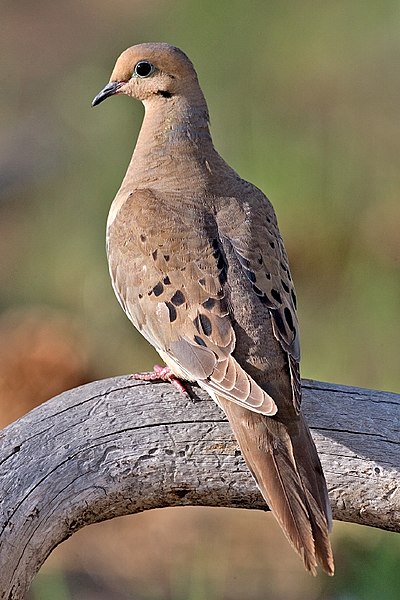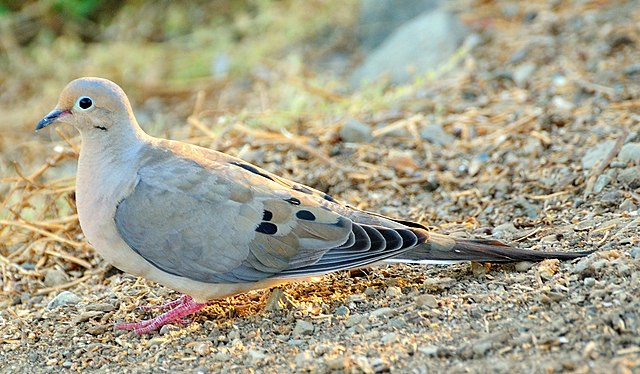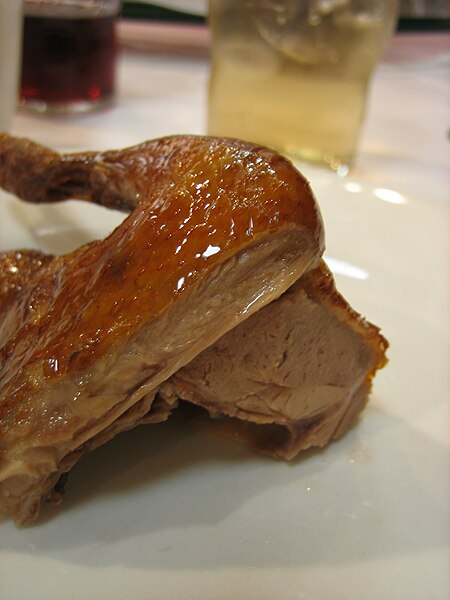The mourning dove is a member of the dove family, Columbidae. The bird is also known as the American mourning dove, the rain dove, the chueybird, colloquially as the turtle dove, and it was once known as the Carolina pigeon and Carolina turtledove. It is one of the most abundant and widespread North American birds and a popular gamebird, with more than 20 million birds shot annually in the U.S., both for sport and meat. Its ability to sustain its population under such pressure is due to its prolific breeding; in warm areas, one pair may raise up to six broods of two young each in a single year. The wings make an unusual whistling sound upon take-off and landing, a form of sonation. The bird is a strong flier, capable of speeds up to 88 km/h (55 mph).
Mourning dove
Mourning dove in California
Mourning dove in Guelph, Ontario, Canada
In Hermosillo, Sonora, Mexico
In culinary terminology, squab is an immature domestic pigeon, typically under four weeks old, or its meat. Some authors describe it as tasting like dark chicken.
Pigeon chicks, approximately twenty days of age
A pair of king pigeons. Large breast muscles are common in utility pigeons.
A dovecote in the caves of Orvieto, Italy where the locals have raised squab for food since the time of the Etruscans in the Iron Age
A large volume of squab is served at Chinese American restaurants.








